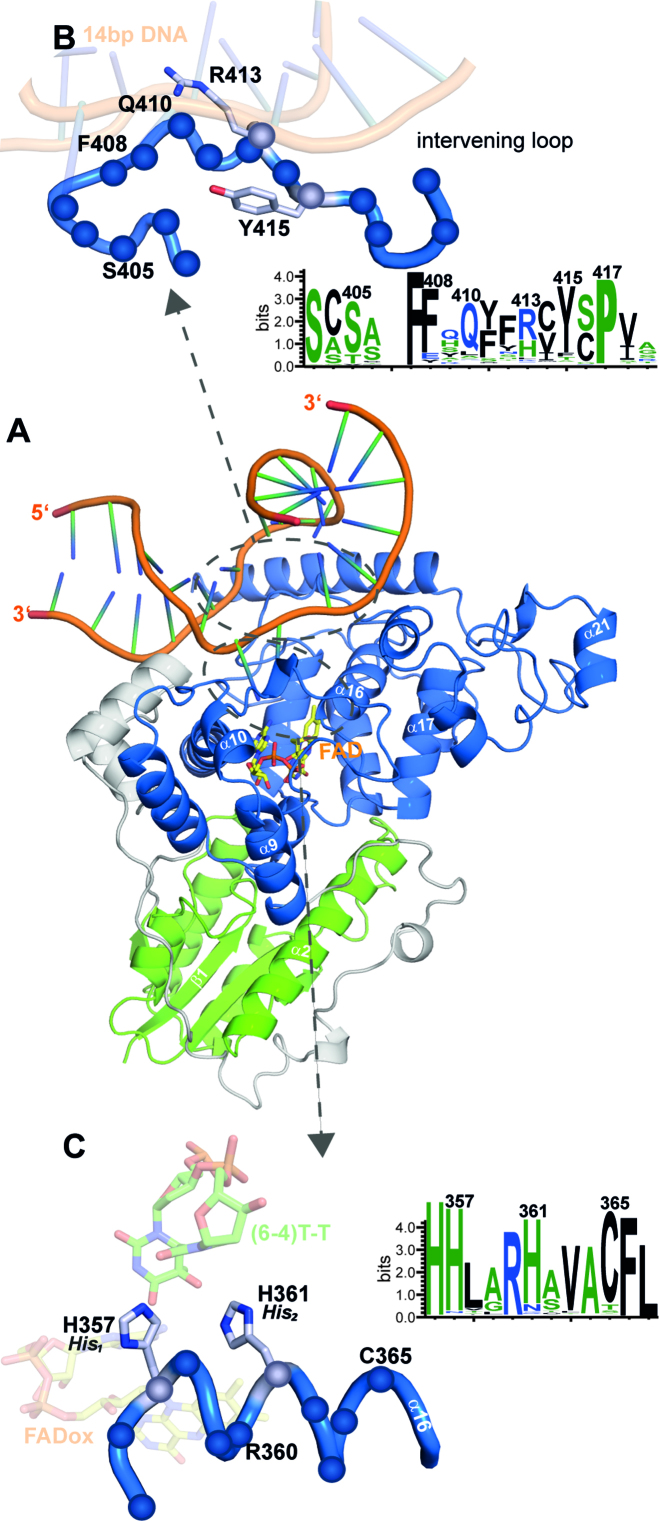Figure 3.
Co-crystal structure of CraCRY in complex with (6-4)PP comprising duplex DNA. (A) Overall structure of CraCRYΔCTE with 14 bp duplex DNA (6FN0) illustrated as cartoon model. (B) Detailed view of the bubble-intruding region of CraCRY highlighting arginine residue R413. In contrast to Dm(6-4) photolyase this residue appears to form only a distant salt bridge (3.9 Å versus 3.1 Å) with the intra-lesion phosphodiester group of the (6-4)PP. Conservation of the BIR within the animal-like cryptochromes/(6-4) photolyases was obtained from 541 non-redundant sequences with less than 90% pairwise sequence identity. The size of the letter correlates with the degree of conservation, for details refer to Supplementary Figure S4. (C) Detailed view of helix α16, which harbors the catalytic histidine residues H357 (His1) and H361 (His2), nomenclature in parentheses according to Yamamoto et al. (43). The HHLARH motif commonly found in (6-4) photolyases is also part of the CraCRYΔCTE active site.

